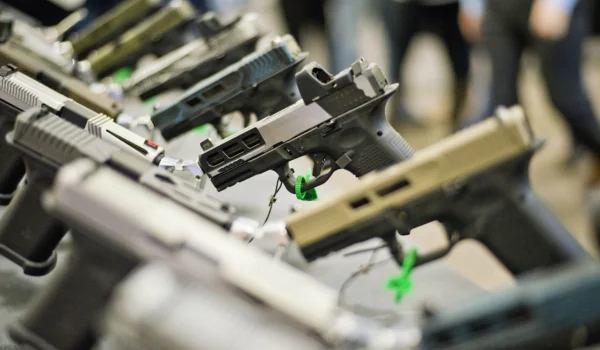California’s handgun roster, officially known as the “Roster of Handguns Certified for Sale,” has long been a focal point in debates over firearm regulations. Designed to ensure that handguns sold within the state meet specific safety standards, the roster has faced numerous legal challenges over the years. Recent developments have further intensified discussions surrounding its future and implications for both firearm manufacturers and consumers.
Understanding the California Handgun Roster
Established under the Unsafe Handgun Act (UHA), the roster mandates that all handguns sold in California undergo rigorous testing to verify their safety features. Key requirements include:

- Loaded Chamber Indicator (LCI): A mechanism that visually or physically indicates whether a cartridge is present in the chamber.
- Magazine Disconnect Mechanism (MDM): A safety feature preventing the firearm from discharging when the magazine is removed.
- Microstamping: A technology that imprints a unique identifier onto the cartridge casing when the firearm is discharged, aiding in ballistic identification.
Handguns lacking these features are typically excluded from the roster, limiting their availability for sale within the state.
Recent Legal Challenges and Developments
Several lawsuits have recently challenged the constitutionality of the handgun roster, leading to significant legal proceedings:
- Boland v. Bonta: In March 2023, U.S. District Judge Cormac J. Carney issued a preliminary injunction against enforcing the UHA’s requirements for microstamping, LCI, and MDM on new semi-automatic handguns added to the roster. Judge Carney noted that no handgun worldwide possesses all these features, rendering the requirements impractical and infringing upon Second Amendment rights. He observed that law enforcement agencies do not use firearms with these mandated features, highlighting a discrepancy in safety standards.
- Renna v. Bonta: On March 31, 2023, Judge Dana Sabraw granted a preliminary injunction against the enforcement of the UHA’s requirements and the stipulation to remove three grandfathered handguns for every new model added to the roster. However, this injunction was stayed pending appeal, maintaining the status quo until higher courts review the case.
Legislative Responses and Future Implications
In response to these legal challenges, California has undertaken legislative measures to uphold certain aspects of the handgun roster:
- Senate Bill 452: Enacted on September 26, 2023, SB 452 reintroduces the microstamping requirement as a standalone mandate. The bill stipulates that, contingent upon the Department of Justice’s assessment of technological viability, all handguns sold in California must incorporate microstamping technology by January 1, 2028. This legislative move aims to reinforce ballistic identification capabilities, despite ongoing debates about the practicality and implementation of microstamping.
Impact on Firearm Manufacturers and Consumers
The evolving legal and legislative landscape surrounding the handgun roster has significant ramifications:
- Manufacturers: Firearm producers face challenges in designing models that comply with California’s stringent requirements. The microstamping mandate, in particular, has been contentious, with critics arguing about its feasibility and potential patent encumbrances. Some manufacturers have expressed concerns about the economic viability of producing roster-compliant models, potentially limiting the variety of handguns available in the California market.
- Consumers: Californians may experience restricted access to newer handgun models, as manufacturers weigh the costs and complexities of compliance. This limitation could affect consumers’ ability to purchase firearms equipped with the latest safety and performance enhancements available in other states.
Ongoing Legal Proceedings and Outlook
The legal battles over the handgun roster are far from over. The stays issued in both Boland v. Bonta and Renna v. Bonta indicate that appellate courts, including the Ninth Circuit, will further scrutinize these cases. The outcomes could redefine the balance between state-imposed safety regulations and constitutionally protected firearm rights.
As these cases progress, stakeholders—including legislators, firearm manufacturers, advocacy groups, and consumers—are closely monitoring developments. The decisions rendered could set precedents influencing firearm regulation not only in California but also potentially informing national discourse on Second Amendment rights and public safety considerations.
Conclusion
California’s handgun roster remains a pivotal element in the state’s firearm regulatory framework. The recent legal challenges underscore the ongoing tension between ensuring public safety through stringent regulations and upholding constitutional rights. As the judiciary continues to evaluate the roster’s provisions, the future of handgun availability and regulation in California hangs in the balance, with outcomes that could resonate beyond the state’s borders.


 Oliver Johnson is LawScroller’s Senior Legal Correspondent specializing in civil litigation, class actions, and consumer lawsuit coverage. He breaks down complex settlements and court decisions into clear, practical guidance for readers.
Oliver Johnson is LawScroller’s Senior Legal Correspondent specializing in civil litigation, class actions, and consumer lawsuit coverage. He breaks down complex settlements and court decisions into clear, practical guidance for readers.